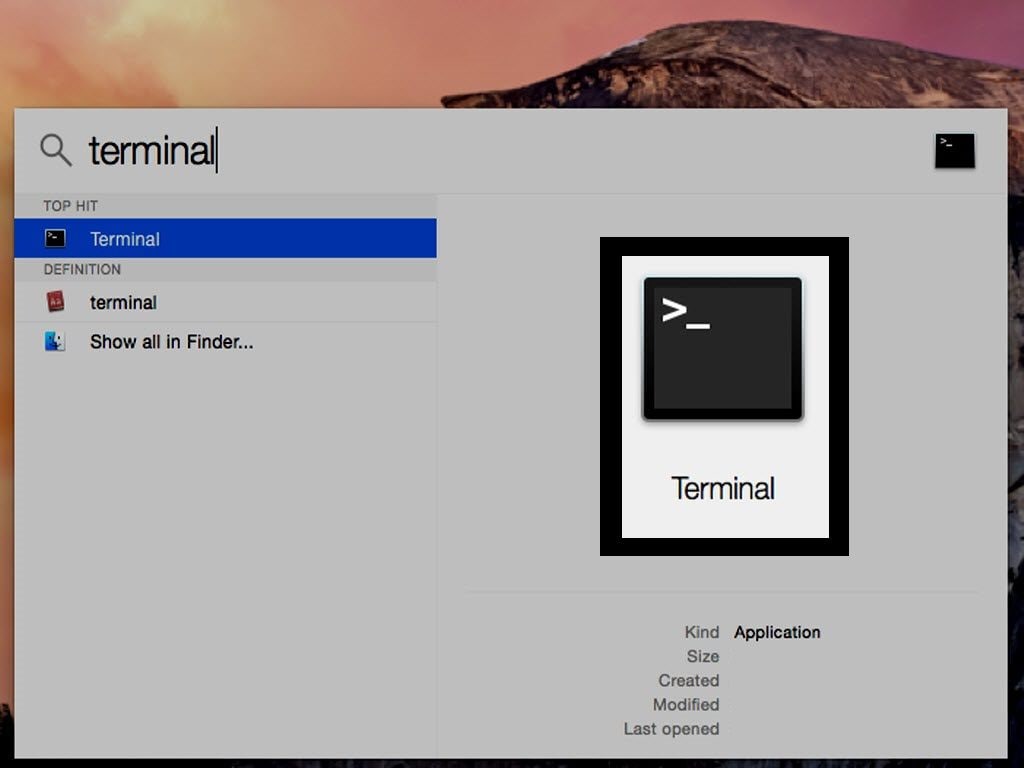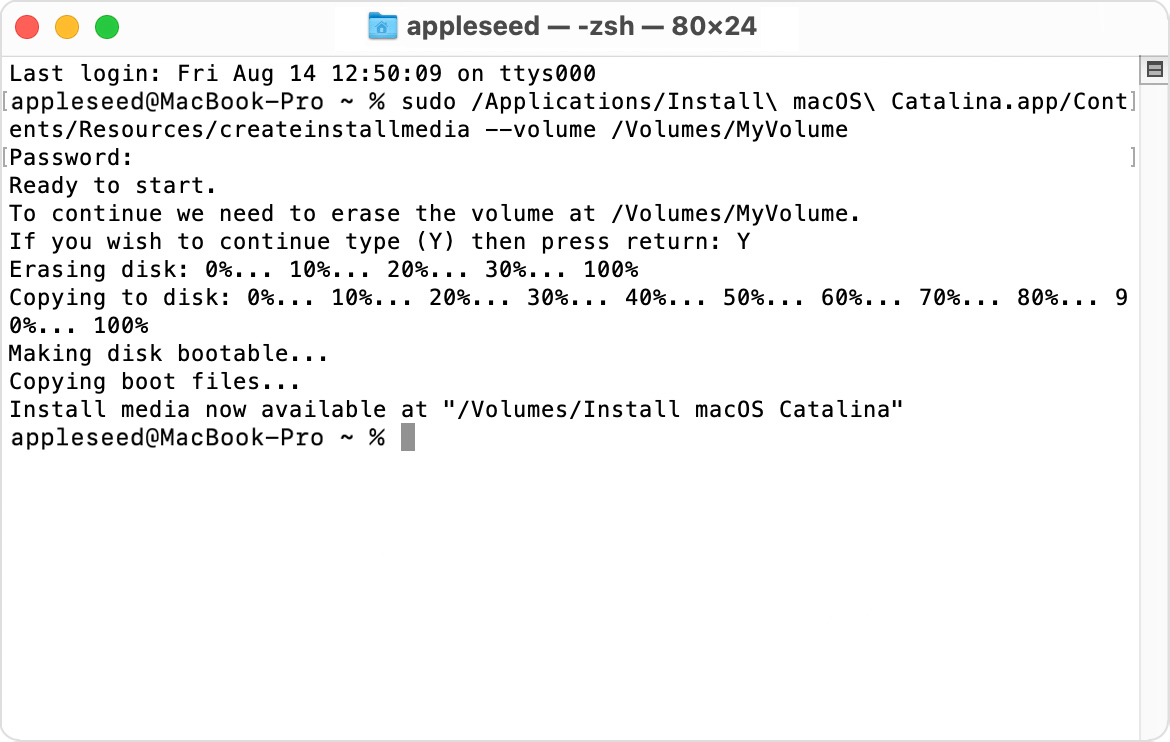Create a Bootable Ubuntu USB Drive in Mac OS X. As I said earlier, creating a bootable USB in Mac OS X is a tricky procedure, be it for Ubuntu or any other bootable OS. But don’t worry, following all the steps carefully will have you going. Let’s see what you need to for a bootable USB: Step 1: Format the USB drive. Apple is known for.
(There's no video for Mac OS 9.2.2 'boot kit' for booting your G3/G4 from an USB stick yet. Please contribute to MR and add a video now!)

I bought a 32 gigabyte USB drive at Walmart for only $3, so this shouldn't be very expensive. Stick your USB drive into your Mac. Then open your terminal. You can do this using MacOS Spotlight by pressing both the ⌘ and Space bar at the same time, then typing 'terminal' and hitting enter. Don't be intimidated by the command line interface. Format FAT32 on Mac Terminal Command Line The command-line behavior does the same way to erase data with the Disk Utility. Again, create a backup before taking this action. To format FAT32 on Mac with Terminal, follow the next steps: Step 1. Connect the USB flash drive to your Mac computer.

What is Mac OS 9.2.2 'boot kit' for booting your G3/G4 from an USB stick? Stop wasting plastic! You've been doing it wrong if you burn install CD's for your old Mac :PThis Mac OS 9.2.2 'boot kit' was made by @that-ben and makes the process of booting (and installing) Mac OS 9 on any G3 and most G4's from an USB stick a little bit easier, because not all the Mac OS 9 install CD images can be used to boot a Mac from an unlocked volume (such as from an USB stick or hard drive). This disk image does boot the computer into a fully useable desktop (albeit quite slow) and it's loaded with utilities and disk image mounting tools which will enable you to prepare and install Mac OS, everything without the need for a CD-ROM drive at all. Since the USB drive is unlocked, you can even surf the web using the pre-installed Classilla browser and go get more files, directly from the same computer you're about to install Mac OS on :P There is no Mac OS installer on this disk image. You still have to download a Mac OS install CD ISO of your choice (Mac OS 9.2.2 Universal 2002 edition is highly suggested unless you know and want to use your machine specific Mac OS install CD) in order to install it on your Mac. Follow these steps to clone this disk image onto an USB stick and follow the link at the bottom of that article to learn how to boot G3's and G4's from an USB stick using Open Firmware. Once the Mac is booted off of the USB stick, what I would do is: 1) Copy anything from the internal hard drive that's worth keeping onto an USB stick or external drive and then format the internal hard drive as HFS Extended using the Drive Setup found under the Applications folder on the USB stick. 2) Use another USB stick (formated as FAT32 if your main computer is a Windows PC or HFS Extended if it's under Mac OS X) or the network to copy your Mac OS install CD image onto that Mac's internal hard drive. 3) Lock that Mac OS install disk image (click on it to select it, then under the menu at the top: File > Get Info, then check the Locked attribute on the bottom/left corner). 4) Use the pre-loaded Toast 5 Titanium to mount the Mac OS install CD image (locked). 5) Launch the installer and enjoy your freshly installed Mac! No CD, no pollution. Pre-loaded software installed on the USB stick that you can use when booting off of it include:
Mac OS 9.2.2 Boot Kit.zip(164.02 MiB / 171.99 MB) Mac OS 9.2.2 Boot Kit / Toast (ISO) image / Zipped 1713 / 2019-02-12 / 3772eaedf5a1528c88d0a65252eb1333668b35c1 / / Architecture
Architecture: PPC Use this to boot any G3 and most G4's into a fully useable Mac OS 9.2.2 desktop from an USB stick, pre-loaded with all the tools you need to prepare and install Mac OS 9 on your PowerPC Mac. This could also be used to boot the QEMU emulator if you wanted. Emulating this? It should run fine under: SheepShaver |
Are you looking for a secure way to format USB to FAT32 on Mac? You are at the right place. Follow here, you can find two methods that will assist you in doing so on your storage device. And if you lost data during the formatting, reliable Mac file recovery software is ready to help anytime:
| Workable Solutions | Step-by-step Troubleshooting |
|---|---|
| Method 1. Use Disk Utility | Connect USB to Mac > Go to Applications > Utilities > Disk Utility > Select USB and click 'Erase'...Full steps |
| Method 2. Use Terminal Command | Connect USB to Mac > Hit cmd + space keys > Type terminal and hit Enter...Full steps |
| Bonus Tip. Recover Formatted Data | If you lost data due to formatting, run EaseUS file recovery software > Scan and recover formatted data...Full steps |
How to Format a USB Flash Drive with Mac to FAT32
Computer users who use a USB might have the demand for formatting it to the FAT32 file system. Compare with the other commonly used NTFS file system on a flash drive, FAT32 has a compatibility advantage across many operating systems.
It's a universal format that is compatible with Mac OS X/macOS, Windows, Linux, and DOS systems. So, if users anticipate using the flash drive with more than one operating system, they will definitely benefit from the FAT32 file system. For Apple Mac users, there are two ways to format a USB flash drive to FAT32, namely Disk Utility and Terminal command line. Below are the detailed steps of the FAT32 format with both methods.
Method 1. Format FAT32 on Mac [Disk Utility]
To format USB to FAT32 with Disk Utility will erase all data on the flash drive, so before you doing so, please do remember to check whether you have saved useful data to another secure device in advance.
To format the USB drive to FAT32, follow the next steps:
Step 1. Connect the USB flash drive to your Mac computer.
Step 2. Go to Applications >Utilities > Double click and open Disk Utility.
Step 3. Select your USB flash drive on the sidebar, choose Erase.
Step 4. Rename the USB flash drive (optional).
Step 5. Choose the format as MS-DOS (FAT) for Format, Master Boot Record for Scheme. Then click Erase.
Wait for the process to complete, then you'll get an empty new USB flash drive with FAT32 as the file system. You can use it for saving data again.
Method 2. Format FAT32 on Mac [Terminal Command Line]
The command-line behavior does the same way to erase data with the Disk Utility. Again, create a backup before taking this action.
To format FAT32 on Mac with Terminal, follow the next steps:
Step 1. Connect the USB flash drive to your Mac computer.
Step 2. Hit cmd + space to run Spotlight, type: terminal, and hit Enter.
Step 3. Type: diskutil list and find out which disk is your USB drive.
Step 4. Type: sudo diskutil eraseDisk FAT32 MBRFormat /dev/disk2.
Mac Terminal Boot From Usb Pc Camera
- sudo gives you user right.
- Diskutil calls disk utility program.
- eraseDisk commands to format.
- FAT32 sets the file system.
- MBRFormat tells disk utility to format with a Master Boot Record.
- /dev/disk2 is the location of the USB drive.
Wait for the process to complete. After this, you can type 'diskutil list' in the command again to check if the formatting has been successful.
Mac Terminal Command Boot From Usb
Bonus Tip: How to Recover Data from Formatted USB
Formatting the USB would erase the data on it completely, so please make sure that you have a backup. If you don't, you can count on data recovery software to retrieve the lost data.
EaseUS Data Recovery Wizard has both Windows and Mac versions, so it's a good choice for data recovery, no matter you're using a PC or Mac. For Mac users, it only takes a few clicks for the software to scan and display the formatted data. To guarantee an effective data recovery without spending money to no avail, you can install the Mac data recovery free version for the first trial. You can preview all the found data before the final recovery.
To recover data from a formatted USB flash drive on Mac, follow the next steps:
Step 1. Correctly connect your USB flash drive to your Mac. Launch EaseUS Data Recovery Wizard for Mac. Start selecting the flash drive and click 'Scan' to let the software search lost files on it.
Step 2. After a quick scan and deep scan, all files will be presented in the left panel in the scan results.
Step 3. Select files you want to recover and click the 'Recover Now' button. Don't save the recoverable files to the USB drive itself in case of data overwriting.
